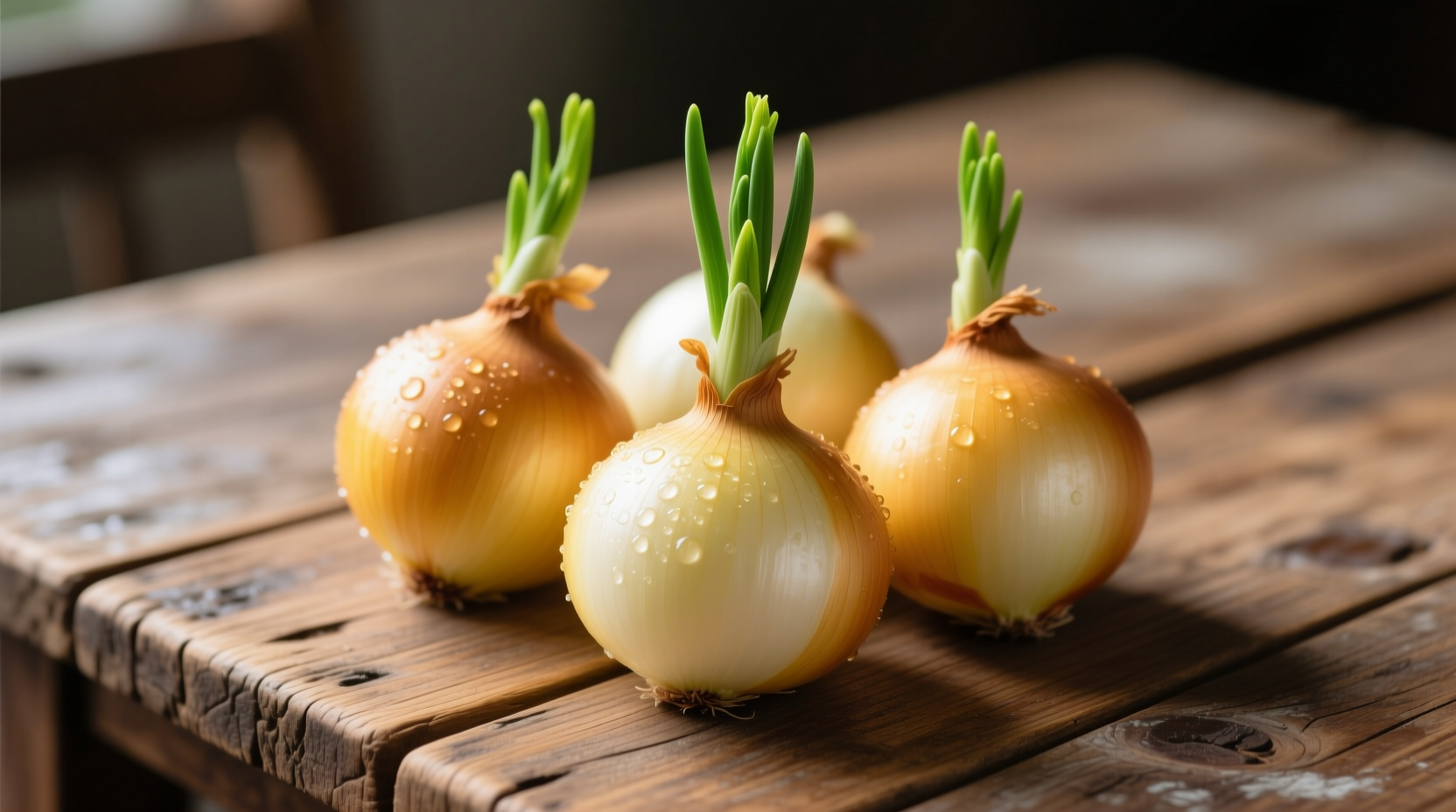Understanding the Essential Allium: More Than Just a Kitchen Staple
When you search to define onion, you're exploring one of humanity's oldest cultivated crops with documented use dating back 5,000 years. This comprehensive guide delivers precise botanical classification, practical culinary applications, and science-backed nutritional information—everything you need to fully understand this kitchen essential.
The Botanical Foundation: What Exactly Is an Onion?
Scientifically classified as Allium cepa, onions belong to the Amaryllidaceae family, which includes garlic, leeks, and chives. The edible portion develops as a modified underground stem called a bulb, formed from concentric layers of fleshy leaf bases. These layers store nutrients that allow the plant to survive adverse conditions.
Onion bulbs develop through a process called bulbing, triggered by day length and temperature. Short-day varieties form bulbs with 10-12 hours of daylight, while long-day types require 14-16 hours. This biological adaptation explains regional growing differences and seasonal availability.

Historical Journey: From Ancient Remedy to Culinary Essential
The onion's story spans civilizations. Archaeological evidence from Bronze Age settlements in China and Egypt confirms onion cultivation dating to 5000 BCE. Ancient Egyptians revered onions for their spherical shape symbolizing eternal life, often including them in burial tombs—including King Ramses IV's tomb where onions were found placed in eye sockets.
| Era | Historical Significance | Documented Use |
|---|---|---|
| 5000 BCE | First cultivation in Iran and West Pakistan | Food source and medicinal applications |
| 3200 BCE | Egyptian hieroglyphs depict onion cultivation | Worker wages (pyramid builders received onions) |
| 1st Century CE | Roman naturalist Pliny documents 8 varieties | Medicinal treatments for digestive issues |
| 1600s | Global spread through trade routes | Preserved for long sea voyages to prevent scurvy |
Onion Varieties Decoded: Choosing the Right Type for Your Needs
Understanding the differences between onion varieties transforms your cooking results. Each type offers distinct flavor profiles, storage capabilities, and culinary applications that professional chefs leverage for specific outcomes.
| Variety | Flavor Profile | Best Culinary Uses | Storage Duration |
|---|---|---|---|
| Yellow Onions | Strong, pungent when raw; sweetens when cooked | Sautéing, caramelizing, soups, stews | 3-4 months |
| Red Onions | Sharp, slightly sweet with vibrant color | Salads, salsas, pickling, grilled dishes | 2-3 weeks |
| White Onions | Crisp, clean heat with less sweetness | Mexican cuisine, fresh salsas, fish dishes | 1-2 months |
| Shallots | Delicate, subtle garlic-like notes | Vinaigrettes, sauces, delicate dishes | 1-2 months |
| Green Onions | Mild, fresh with varying intensity from white to green | Garnishes, stir-fries, salads, egg dishes | 1-2 weeks |
Culinary Science: How Onions Transform When Cooked
The magic of onions in cooking stems from chemical reactions that occur with heat application. When sliced, onions release alliinase enzymes that convert sulfoxides to sulfenic acids, creating the characteristic pungency. Cooking triggers different transformations:
- Raw application: Provides sharp bite and crisp texture—ideal for salsas and salads where freshness matters
- Sautéing (medium heat): Breaks down cell walls, releasing sugars that caramelize between 140-165°F (60-74°C)
- Caramelizing (low heat, 30+ minutes): Complex Maillard reactions create 20+ flavor compounds resulting in deep sweetness
- Roasting: Concentrates natural sugars while maintaining structural integrity for presentation
Professional chefs often employ the "onion foundation" technique—starting dishes with onions to build flavor layers. The order of addition matters: sweeter varieties like Vidalia work best added later, while pungent yellow onions form ideal starting points for soup bases.
Nutritional Profile: Health Benefits Backed by Research
According to USDA FoodData Central, a medium raw onion (110g) provides:
- 44 calories
- 10g carbohydrates (including 2g fiber)
- 20% of daily vitamin C needs
- Significant B vitamins (B6, folate)
- Quercetin and other flavonoids with antioxidant properties
Research published in the Journal of Agricultural and Food Chemistry confirms onions contain organosulfur compounds that may support cardiovascular health. The flavonoid quercetin, particularly abundant in red onions, demonstrates anti-inflammatory properties in multiple clinical studies.
Selection and Storage: Maximizing Freshness and Flavor
Choosing quality onions requires attention to specific indicators:
- Selection criteria: Firm bulbs without soft spots, dry outer skin, no visible sprouting
- Storage conditions: Keep in cool, dark, well-ventilated space (ideal: 45-55°F/7-13°C with 65-70% humidity)
- Avoid: Refrigeration (causes moisture retention), plastic bags (traps ethylene gas), proximity to potatoes (accelerates spoilage)
Properly stored yellow onions maintain quality for 2-3 months, while more delicate varieties like sweet onions last 1-2 weeks. Cut onions should be sealed in airtight containers and refrigerated for up to 7 days.
Common Questions About Onions
Understanding these frequently asked questions helps maximize your onion experience:











 浙公网安备
33010002000092号
浙公网安备
33010002000092号 浙B2-20120091-4
浙B2-20120091-4